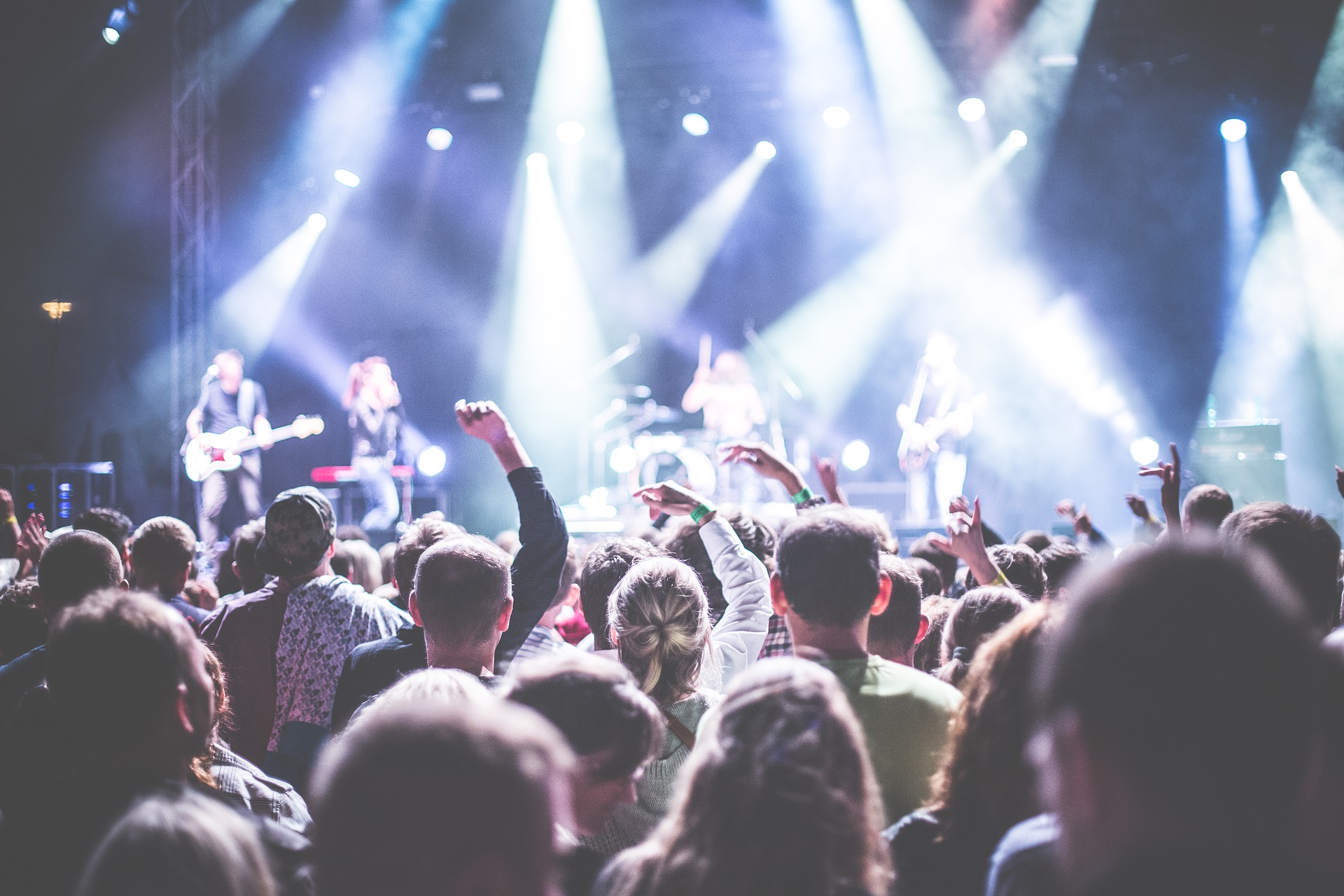2017: The year that the music biz addressed what Millennials wanted

PART 1: THE RECORDING INDUSTRY: DON’T STREAM IT’S OVER
After last year’s much-trumpeted confirmation that the global recorded music industry had indeed made a financial turn-around, 2017 displayed a confidence and vitality from the sector.
Label executives started to take risks, base salaries at top jobs began to drift north of $1 million, and R&D remained higher than most other sectors.
This was the year where the recorded music industry begun to set up for a golden period, with the return after two decades of financial investors and a trickle-down of revenue to all levels of the ecosystem.
Everyone is watching to see how the Spotify IPO goes in early 2018. If it works, there’ll be a goldrush. If it doesn’t, well… it will definitely be shaping the market either way.
What also underscored through 2017 is that the rising Millennial generation – native to technology, used only to 24/7 clicks and bemusedly impervious to legal and moral arguments about the correct use of music – has re-shaped how music is created, marketed, and distributed.
It’s not a bad thing, of course. In the first six months, the Recording Industry Association of America (RIAA) estimated retail revenue was US$4 billion, up over 17% from the same period in 2016.
Revenue from streaming accounted for 62% of that, while that from digital radio services such as Pandora rose 21% to $493 million.
The good news for the RIAA was that paid subscriptions showed the most dramatic growth – from $474,000 in the first half of 2015 to $1.7 million so far this financial year, an uptick of 258% in just two years.
In September, the IFPI’s Connecting With Music report revealed that 45% of global fans are listening through a licensed audio service (up from 37% in 2016).
Younger people are more engaged with music than ever before, with 85% of the 13-15 age group uses a streaming service – proving that music streaming could soon turn into a cradle-to-grave business.
This is because Millennials are being offered the musical world on a platter: a choice of 400 million tracks at their fingertips, and the streaming services such as Spotify and Apple Music elbowing each other out of the way to give listeners services and features that confirm how the younger consumers see themselves – VIPs and trend setters.
This activity also highlights the two major battles the music industry faces in 2018 – the value gap and copyright infringement. And the first is something that Millennials don’t care about, although they are part of the problem.
Figures show that 85% of YouTube visitors use the site for music each month (which translates to an estimated 1.3 billion views), and 76% of visitors use it for music already known to them.
According to the IFPI, upload to video services accounts for the majority of on-demand service time, yet they “do not return fair value to the music community.”
Which is even more concerning, given YouTube alone accounts for 46% of all time spent listening to on-demand music.
As for copyright infringement, 40% of consumers admit they access unlicensed music.
Stream ripping is the main culprit, accounting for 35% of this figure (and rising as high as 53% in the 16-24 demographic).
Analysts say that the most effective way to address this is to understand why Millennials do infringe copyright. And studies keep coming back to the same reasons and excuses – it’s too costly, they don’t like to pay, they can’t access content in their region, complex payment systems, and they only want to use the music once.
Each of these will obviously have a strong and valid counter-argument from the music industry, but understanding the reasons and finding a solution to them could go a long way to solving the problem and unlocking revenue streams.
An answer to the latter could lie in the gaming industry.
For instance, the power of gaming personalities generates direct subscriptions, huge sponsorship dollars, brand partnerships (which provide exclusive offers for the personality’s followers) and fan donations – all innovative business models which quite happily use the gamer’s obsession to relieve her or him of their money.
Donors have their names read out online and get VIP treatment from personalities, whether engaging them in conversation, giving them advice, or playing a song – all of which gives them bragging rights with other gamers.
Gamers can buy new items within the platform, such as clothes for the characters or alternate soundtracks (both of which made League of Legends $1 billion a year). Video games also offer virtual vanity goods which can be unlocked by special achievement or payment, limited edition items which have to be won, daily quests which bring fans back time and time again, and season passes which provide additional content after the game has already been released.
In the same vein, virtual albums and interactive videos are fast becoming commonplace, led by some particularly inventive and exhilarating work from Childish Gambino and Bjork.
In terms of a similar free-form gaming release used in music, Kanye West’s The Life of Pablo continued to attract amendments long after it was released. When he cut out the Sia verse on ‘Wolves’, fans took to social media to protest – and he put it back in.
Part 2: THE LIVE MUSIC INDUSTRY: LIVE BABY LIVE
Millennials have disrupted the live music experience, but for the greater good.
As TMN reported last month, major stadiums in America are spending millions of dollars changing their designs to cater for this totally different mindset.
Promoters have to work around the fact that Millennial music fans are buying their gig tickets at the last minute and often from secondary ticketing sources.
Gametime, a US-based start up secondary ticketing service with a large Millennial base (up to 75%), reported that more than half of their customers buy event tickets the week before and event, and 30% make a purchase on the same day.
This is a trend that will grow in Australia as more state governments, led by NSW and Victoria, bring in laws forbidding resales at over 10% of the original price.
The smarter Australian promoters and venues have already responded, increasing their advertising spend and offering more incentives for Early Bird tickets.
They’ve also worked out that tapping into the Millennials’ individualistic mindset – “I’m a VIP! I’m a trendsetter! I’m a star!” – by giving special and personalised privileges to those who spend the most, works out effectively.
More VIP moments and personalised service, and greater interaction with promoters on social media sees us saying goodbye the socialist we-are-all-equal dream at festivals, hello to Animal Farm!
On a simple level, Australian festivals are increasingly catering to younger attendees wanting to play a greater role in an event by allowing fans to curate at least one stage at their events.
More and more organisers are asking fans what kind of non-music experiences they want, whether it be a Bondi beach bar set up in the middle of an outback event, wider food offerings or more artist activations.
Technology has moved live events beyond fan-friendly apps, RFID bracelets and standing next to the performer onstage to virtual reality, augmented reality and holograms. Storytelling is not just through the music but tapping into other mediums and sensory loads.
These are expensive, but this is where corporate sponsors will be happy to help out, thanks to the days where a sponsor just bangs on a logo being long gone.
In Australia we saw the first examples of brands sponsoring festivals and concerts having a greater relationship with the artists, especially the ones who represent what they say.
We will continue to see a drift away from sponsoring large across-the-board events with mainstream audiences, to something more niche and with an amplified community feeling. This is already commonplace in the United States where live music sponsorship spend is $1.4 billion a year.
Early surveys of Millennials found that they are attracted to brands which support causes. And
in 2017, nothing was more obvious that festivals and concerts creating that greater sense of community, and for which social and political causes bind them even more.
We can also expect to see some great art emerging in the next four or five years.
While there is also the argument that streaming only encourages frothy music for minds with short attention spans (and that’s what music will be over the next few years), let’s keep that for another conversation altogether.
As the Australian “festival season” becomes a 12-month affair and more niche entrants enter the market, festivals will have to work harder to draw new audiences. The opportunity is huge.
The elephant in the room is how threats to public safety at events in Manchester and Las Vegas this year will lead to heightened security at arenas and clubs in the long run. Will it accelerate the moves to increase concert streaming, an initiative that has been tagged as something that “democratises” the live music experience?
Fans no longer have to be at the disadvantage of not being in the “right” city where major acts play all the time, or losing out to bots when getting tickets or having the right amount of disposable income at the right time to score a ticket.
Those waving the flag for concert streaming also offer incentives to those who stream from home, like “going backstage” with the act before the show, or viewing the crowd from the stage.
The other concern is for the venues themselves. In Australia, thankfully some positive initiatives were on the move through 2017 to protect venues.
Following on from Melbourne’s lead, cities such as Sydney and Perth are now looking at the possibility of introducing the Agent of Change guidelines against hungry property developers and serial noise complainants.
An increasing amount of cities are starting to see live music’s future as part of an overall picture that includes economics, housing, tourism, transport, education and brand image – and it’s a shift that could become commonplace.
Live music venues are banding together to look at long-term sustainability, rather than living month-to-month in a sector that is evolving faster than ever before.
The dilemma venues face is the near future is resisting plans where cashed-up donors can buy a venue simply to ensure that it can continue to showcase music, and instead have them run by the people who know what their audiences want.

































